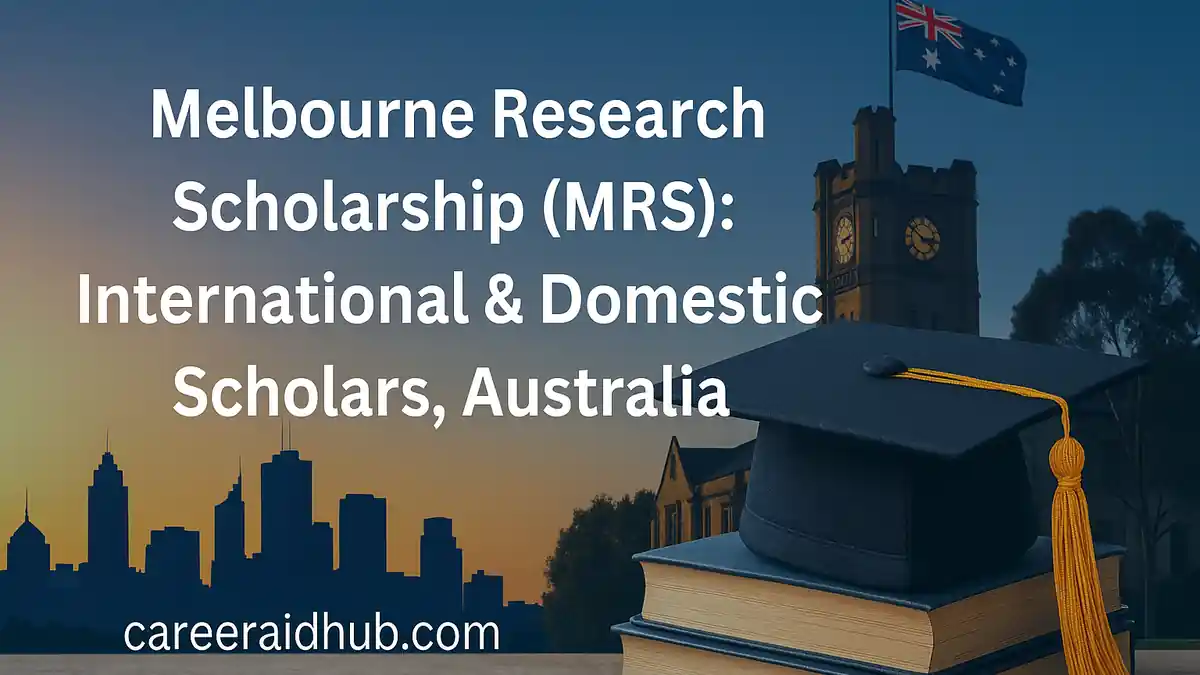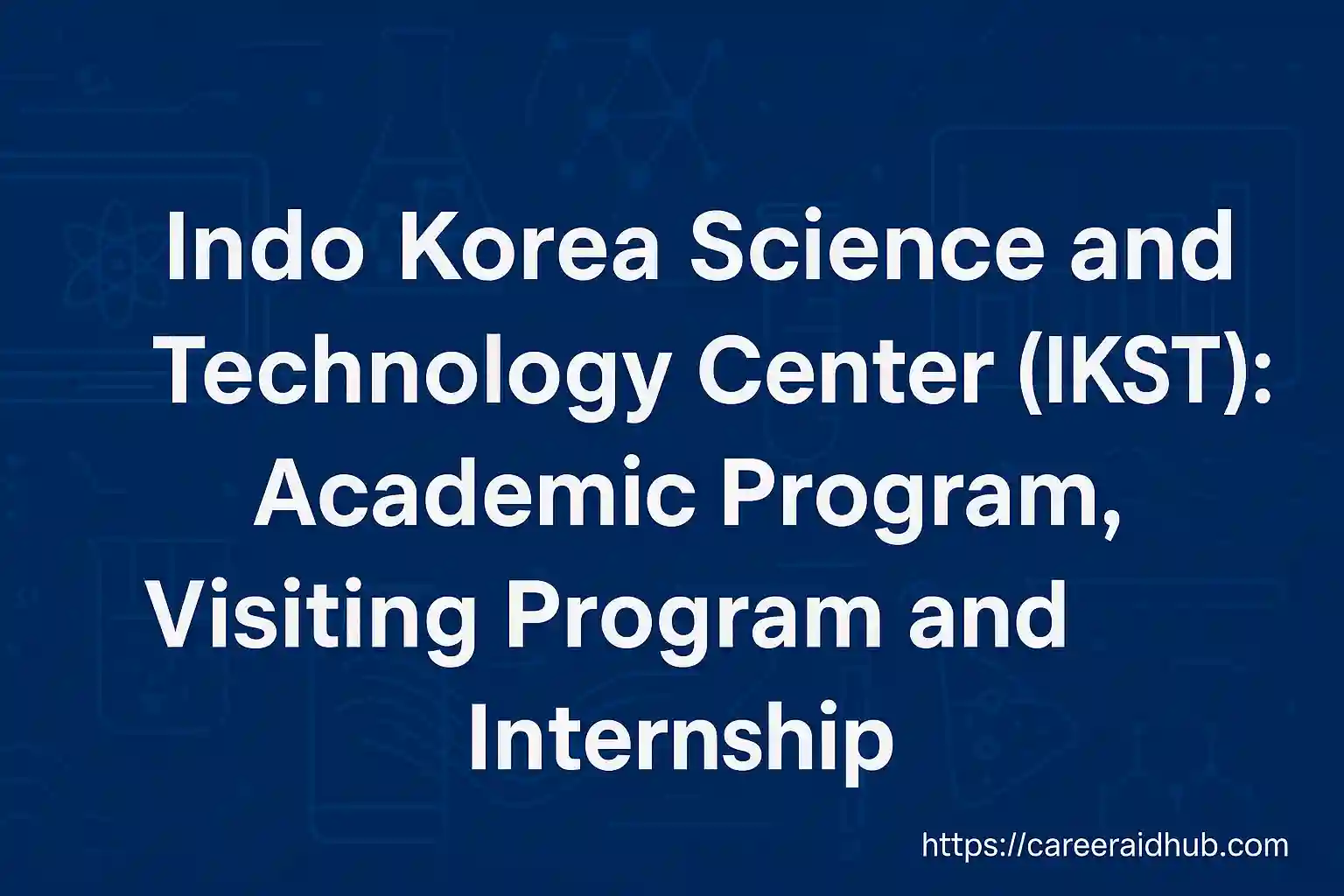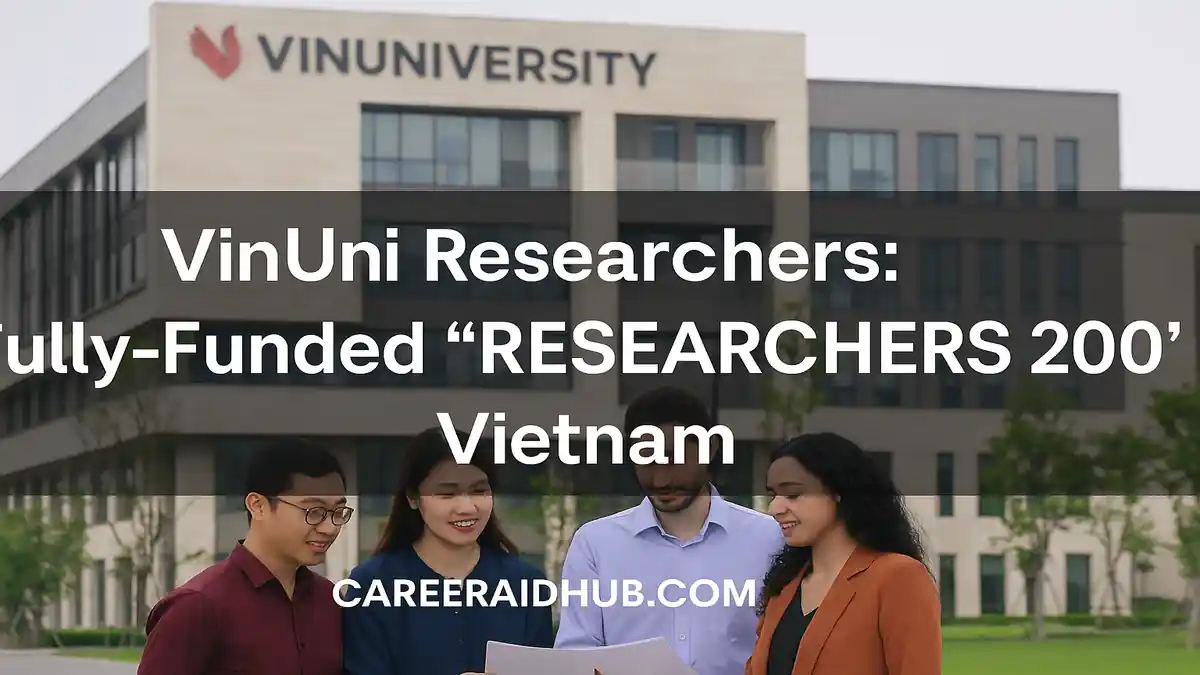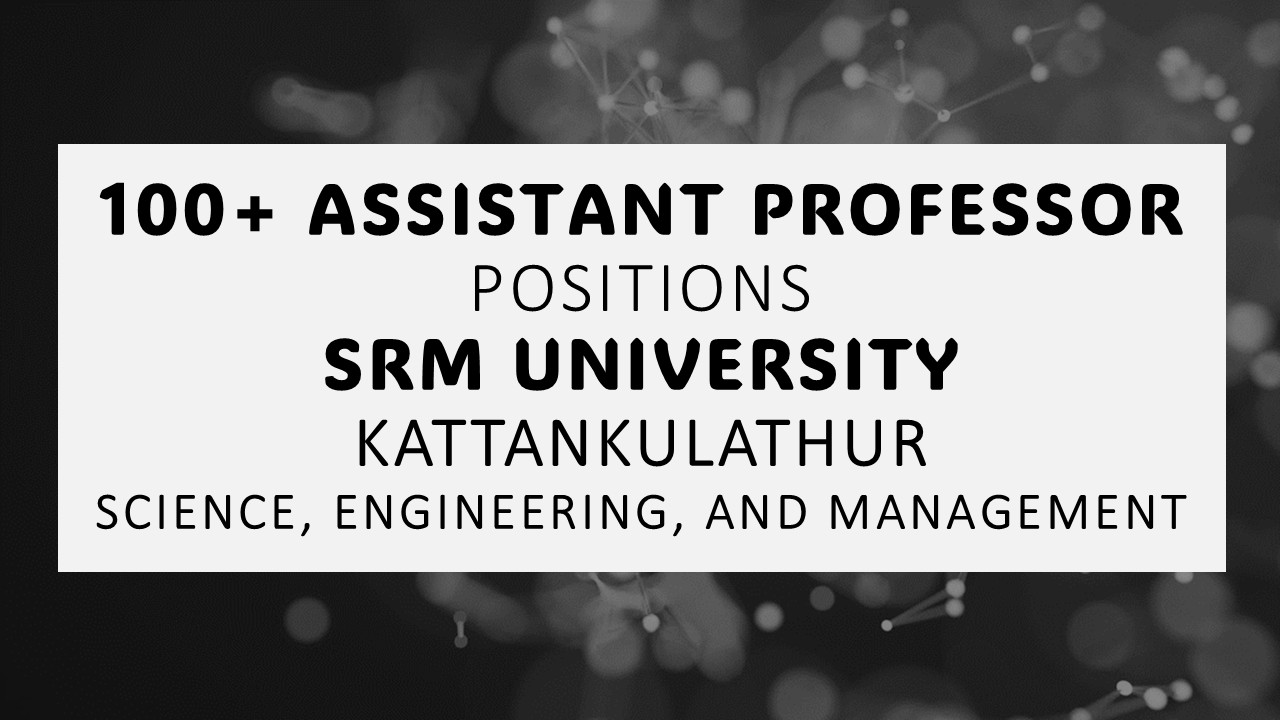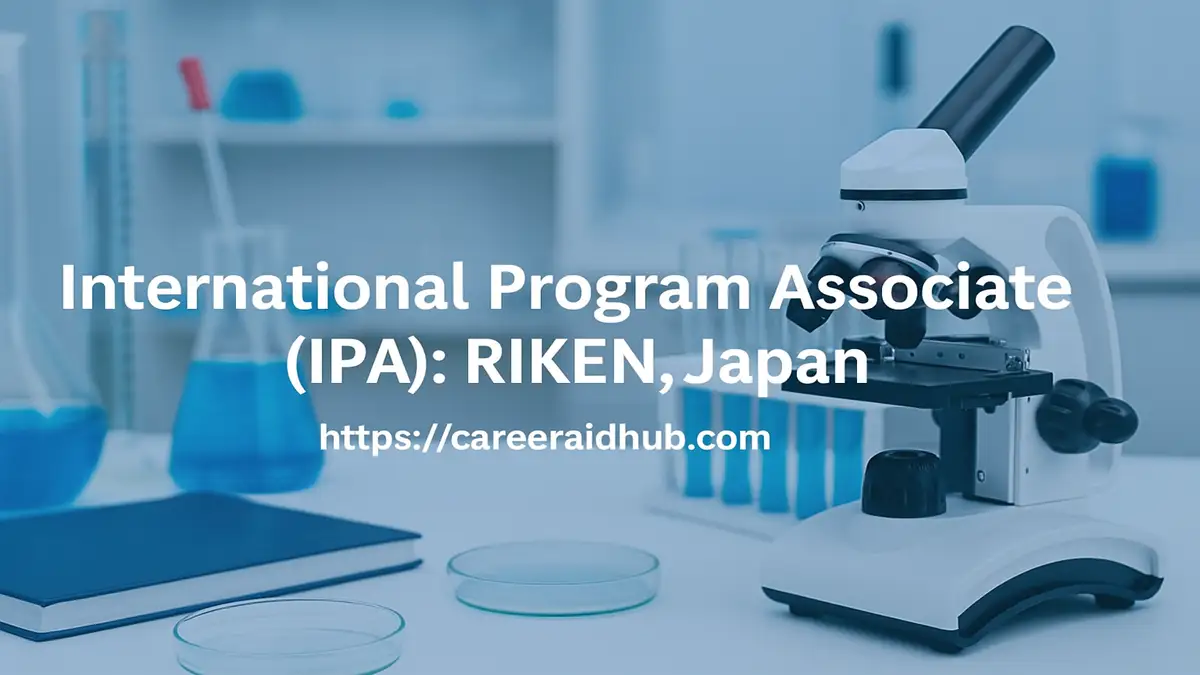Melbourne Research Scholarship (MRS) — A Complete 2025 Guide for International & Domestic Researchers
If you’re aiming for a world-class research degree with solid financial security, the Melbourne Research Scholarship (MRS) at the University of Melbourne stands out as a flagship award. In one package, it combines a full fee offset, a competitive living stipend, relocation support, and (for eligible international students) Overseas Student Health Cover (OSHC). The intent is simple and student-centred: remove financial barriers so you can focus on designing rigorous research, publishing strong outputs, and building a durable academic or industry-research career.
What the Scholarship Covers
100% Tuition Fee Offset
The MRS provides a full tuition fee offset for the standard duration of your program—up to 2 years for a Master by Research and up to 4 years for a doctoral degree (PhD). This means tuition is not a monthly worry: you can plan your candidature around research milestones, experiments, fieldwork, and writing, rather than invoices. The fee offset is designed to align with realistic completion timelines and the normal candidature duration approved by the University of Melbourne.
Living Stipend
Recipients receive a living stipend set at the 2025 full-time study rate of AUD $38,500 per year, paid fortnightly. The stipend is typically available for up to 2 years for a Master by Research and up to 3.5 years for a PhD.
Relocation Allowance
To reduce the friction of starting a new degree, the MRS offers a relocation allowance that is typically AUD $2,000 if you are moving to Melbourne from interstate (outside Victoria) and AUD $3,000 if you are moving from overseas. In practice, this allowance often arrives with your first stipend payment, which helps offset immediate costs—temporary accommodation, initial transport, or essential setup purchases.
OSHC (International Students)
International recipients who require a student visa are provided single-membership Overseas Student Health Cover (OSHC) for the standard course duration. OSHC is a visa requirement in Australia and helps cover basic health insurance while you study. Having OSHC bundled within your scholarship reduces administrative overheads and upfront costs for international researchers.
Many applicants ask what the package “adds up to.” The University frames it as 100% fee remission plus a generous stipend and allowances across the approved course duration.
The exact total varies by degree type and indexation, but the core value proposition is consistent: your tuition is offset and your living costs are materially supported for the standard length of candidature.
How Competitive Is It?
Each year, the University of Melbourne awards a large number of Graduate Research Scholarships, of which the MRS is a principal stream. Internally, applicants are ranked on academic achievement and demonstrated research potential—an approach that prioritizes the strongest alignment of candidate quality, supervisory capacity, and research environment.
While the University indicates hundreds of awards annually—often around 600 stipend-bearing graduate research scholarships—the allocation is still competitive. Strong grades, a compelling research record (e.g., thesis excellence, publications, conference papers), and a feasible, well-justified research proposal significantly elevate your ranking. Applicants should also ensure their dossier is complete, timely, and clearly written to avoid avoidable downgrades in assessment.
Who Is Eligible?
You are eligible for consideration if you:
-
-
Apply for and meet the requirements of a graduate research degree at the University of Melbourne, or
-
Are currently enrolled in a Melbourne graduate research degree.
-
There
Do I Need a Separate Application?
New applicants
In most cases, no separate scholarship application is required. When you apply to a graduate research program, your file is automatically considered for the Melbourne Research Scholarship (and other relevant graduate research scholarships). After submission, a scholarship application is typically created automatically in your student profile. Because some disciplines run local variations (e.g., internal forms or timing nuances), always check the faculty or school page for any exceptional instructions.
Current or deferred students
If you already hold an offer and deferred your start date or you are currently enrolled and seeking to activate scholarship funding, you may need to submit an internal scholarship form or notify your school by specific timelines. These internal processes exist to synchronize scholarship start dates with candidature dates and confirm that you still meet the eligibility criteria at the time funding begins.
Key Dates & Timelines
There is no single, universal deadline. Instead, MRS assessment follows your course application rounds. Faculties and schools may admit on fixed intakes (e.g., Semester 1/2) or rolling timelines that align with supervisory availability, lab schedules, or field seasons.
To strengthen your timing:
-
-
Apply early relative to your desired start date so your file appears in a prime assessment round.
-
Upload all supporting documents promptly: transcripts (with grading scale), a focused research proposal/EOI, detailed referee reports, and evidence of research outputs (e.g., publications, code or datasets, portfolio materials where relevant).
-
Where English proficiency evidence is required, plan test dates so results are available before internal scholarship ranking begins.
-
Because ranking is holistic and time-sensitive, late or incomplete files can miss the most competitive rounds—even if your profile is otherwise strong.
What Makes the MRS Attractive?
1) Full Funding + Realistic Duration
The scholarship’s fee offset covers the entire standard duration of your research degree. When paired with a multi-year stipend (up to 3.5 years for PhD; 2 years for Master by Research), this aligns with typical candidature timelines and reduces pressure to rush complex methods, recruitment, or experiments.
2) Competitive 2025 Living Stipend
At AUD $38,500 per year (2025 rate), the stipend is benchmarked to support life in Melbourne for a full-time candidate. It’s indexed annually, and the inclusion of paid leave acknowledges the real needs of early-career researchers over multi-year projects.
3) Relocation + OSHC for International Students
The relocation allowance and, for eligible international candidates, OSHC, reduce the immediate costs and administrative steps associated with moving to Melbourne. This eases the onboarding period so you can focus on supervisor meetings, lab inductions, ethics training, or safety modules.
4) Clear Merit-Based Selection
Selection criteria emphasize academic performance and research potential. Candidates with well-scoped proposals, evidence of prior research training (e.g., Honours or Masters theses), peer-reviewed outputs, or relevant industry R&D experience will stand out. Strong referee reports—discussing independence, methodology, writing, initiative, and follow-through—further reinforce the case for funding.
How to Strengthen Your Application
Although MRS is auto-considered with your course application, quality of application materials drives the ranking. Consider the following:
Targeted Research Fit
Map your proposal to supervisor expertise. Study recent publications from potential supervisors and research groups. A concise 1–2 page Expression of Interest (EOI) should articulate: the problem statement, why it matters, the gap in the literature, your proposed approach, feasibility (data/methods/ethics), and anticipated impact. Clear alignment between your proposal and a supervisor’s active projects often results in a more coherent candidature plan and stronger departmental support.
Evidence of Research Potential
Beyond grades, committees look for indicators of research readiness: thesis awards or high distinctions; first-author publications or conference papers; datasets, software, or toolkits you’ve built; methodological training (e.g., statistics, lab techniques, field methods); and research employment or internships. If you have industry experience relevant to your topic (e.g., clinical, policy, engineering), frame it in terms of empirical skills, stakeholder access, or translational pathways.
Compelling Referee Reports
Referees should be prompted to address how you work as a researcher: independence, critical reasoning, experimental/analytical rigour, writing clarity, and ability to complete projects to publication. Provide referees with your updated CV, transcripts, draft proposal, and 2–3 bullet highlights they might consider emphasizing (e.g., a particularly challenging method you mastered).
English & Program Requirements
If English proficiency evidence is required for your program, plan the test and buffer time for results uploading. Review school-specific prerequisites (e.g., prerequisite majors, portfolios, or prior coursework) so there are no last-minute holds that push your file into a later, less favourable round.
Life & Research in Melbourne
The University of Melbourne is consistently ranked among the top global institutions, with a research ecosystem spanning disciplinary schools, institutes, and national centres. As an MRS recipient, you gain access to:
-
-
Graduate researcher development programs that cover research integrity, advanced methods, writing for publication, grant and fellowship preparation, and research leadership.
-
Libraries, labs, and core facilities (e.g., microscopy, genomics, high-performance computing) that increase the sophistication and pace of your work.
-
Industry and government partnerships that can open pathways to internships, co-authored outputs, or policy translation.
-
A diverse, multicultural city with strong public transport, vibrant cultural life, and proximity to field sites ranging from healthcare networks to coastal and alpine environments.
-
International students benefit from structured transition support, academic skills resources, and dedicated teams that help with enrolment, compliance, and getting oriented in Melbourne.
Next Steps
-
-
Choose your research program and confirm entry requirements at the school/department level. Ensure your academic background, proposed methods, and topic fit the program’s strengths.
-
Contact potential supervisors with a concise EOI (1–2 pages). Show you understand the current literature, methods, and how your project advances the field.
-
Submit your course application in time for a competitive assessment round. Once lodged, your scholarship consideration is usually automatic.
-
If you are currently enrolled or have deferred, follow your faculty’s instructions to activate scholarship funding (e.g., internal forms, timing confirmations).
-
Plan your relocation and onboarding (for internationals, ensure OSHC is arranged via the scholarship) and schedule your early milestones (ethics, safety training, method refreshers) so you can begin strongly.
-
Official Page (Start Here)
-
-
Melbourne Research Scholarship (MRS) — comprehensive details, coverage, and rates.
-
Graduate Research Scholarships overview — broader context, selection information, and related awards.
-
Graduate Research Scholarship Terms & Conditions — formal rules, including allowances and key definitions.
-
Human Rights Scholarship — an example of another named scholarship you may wish to review if aligned with your profile and field.
-
Bottom line: If you want full tuition coverage, a competitive stipend, and structured support in a top research environment, the Melbourne Research Scholarship deserves a place at the top of your list. Apply early, align with an engaged supervisor, and submit a clear, feasible, and methodologically sound proposal—the combination most likely to unlock funding and a successful candidature at Melbourne.
Quick Summary Table
| Item | Key Details | Notes |
|---|---|---|
| Scholarship Type | Graduate Research (Master by Research, PhD) | University of Melbourne, Australia |
| Tuition Support | 100% fee offset | Up to 2 years (Master), up to 4 years (PhD) |
| Living Stipend | Competitive, paid fortnightly | Up to 2 years (Master), up to 3.5 years (PhD) |
| Health Cover (Intl.) | Single OSHC | For visa-requiring international students |
| Relocation Allowance | Support for interstate/overseas moves | Typically paid with first stipend |
| Eligibility | Apply for or be enrolled in a UoM research degree | Meet program entry and scholarship criteria |
| Application Process | Usually automatic with course application | Some faculties may require extra steps for current/deferred students |
| Selection Criteria | Academic excellence, research potential, supervisor fit | Strong proposal, referees, and outputs help |
| Timing | Follows faculty/course intakes | Apply early; submit complete documents |
| Extras | Paid leave (limited), indexed stipend | Check faculty pages for specifics and updates |
References (Official URLs Only)
-
Melbourne Research Scholarship (MRS). University of Melbourne Scholarships.
Frequently Asked Questions
The Melbourne Research Scholarship funds eligible Master by Research and PhD candidates with fee remission, living support, and key onboarding benefits, enabling focused, high-impact research.
You qualify if you apply for—or are enrolled in—a University of Melbourne graduate research degree and meet program entry and scholarship assessment criteria.
Usually no. You apply for a graduate research degree and the system also considers you for the scholarship automatically, unless your faculty specifies otherwise.
Deadlines align with graduate research intakes. Therefore, submit early and complete documents promptly to be ranked in the most competitive assessment rounds.
Provide transcripts, a focused research proposal or EOI, referee reports, and evidence of research outputs or experience. Additionally, include English proficiency if required.
Committees rank applicants on academic excellence and research potential, assessing alignment with supervisors, feasibility, methodology, and demonstrated scholarly achievements.
Yes. Eligible recipients receive a fortnightly stipend for standard candidature periods, supporting living costs while they complete research milestones.
Yes, typically. Eligible international recipients receive single Overseas Student Health Cover to meet visa requirements and access essential health services during study.
Practices vary. However, identifying a suitable supervisor and aligning your proposal with their expertise generally strengthens assessment and candidature planning.
Yes. Current or deferred candidates may be considered; however, some faculties require an internal scholarship form or timing confirmation to activate funding.
Premium Mentorship for a Stronger Application
- Premium Mentorship: personalised 1:1 guidance for this and similar opportunities
- In-depth review of your CV, academic profile, and key statements
- Aligned with international selection criteria so your profile matches what panels expect
- Stronger, more compelling narrative for highly competitive calls
- Step-by-step support from opportunity mapping to final submission (fee-based)

